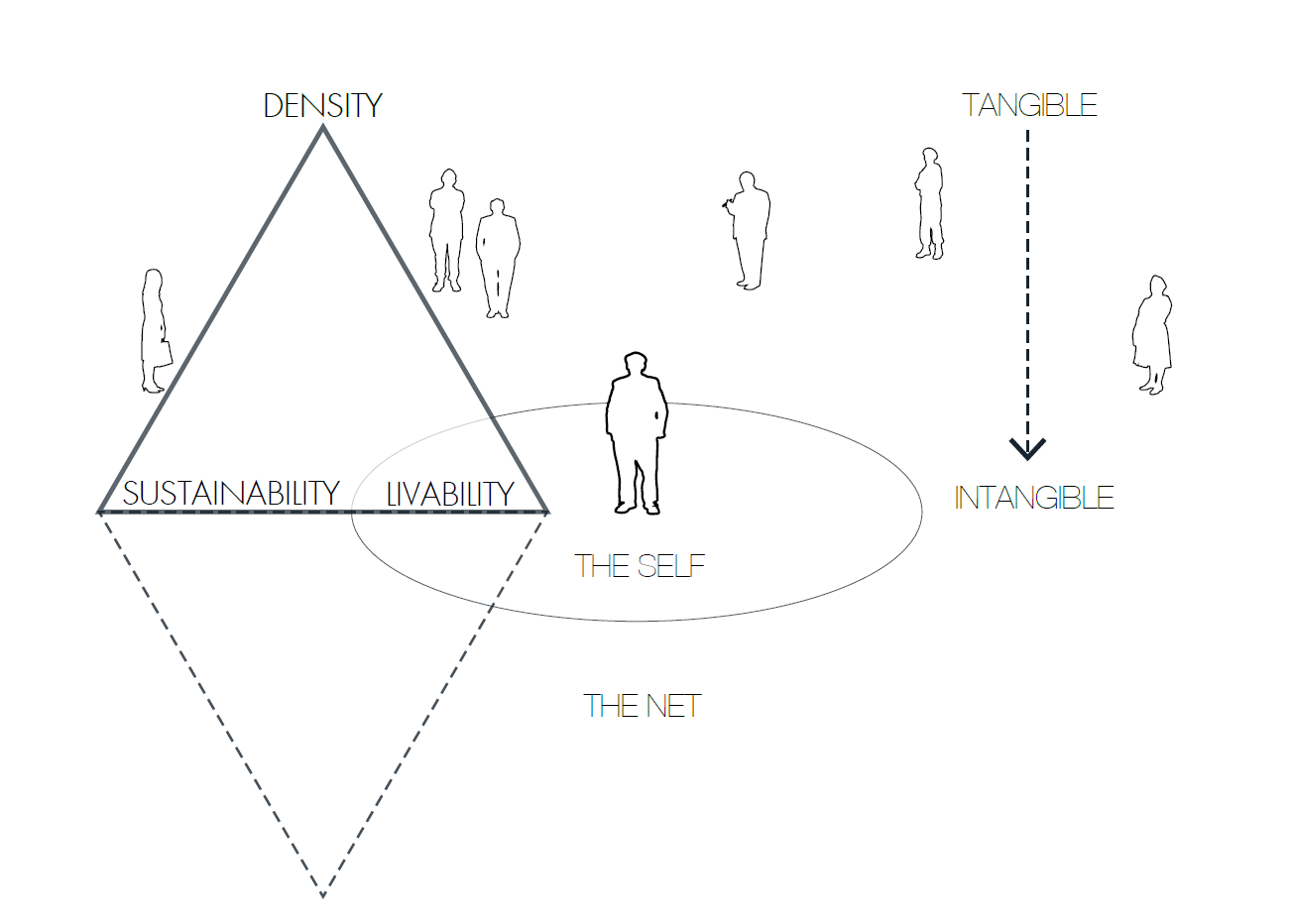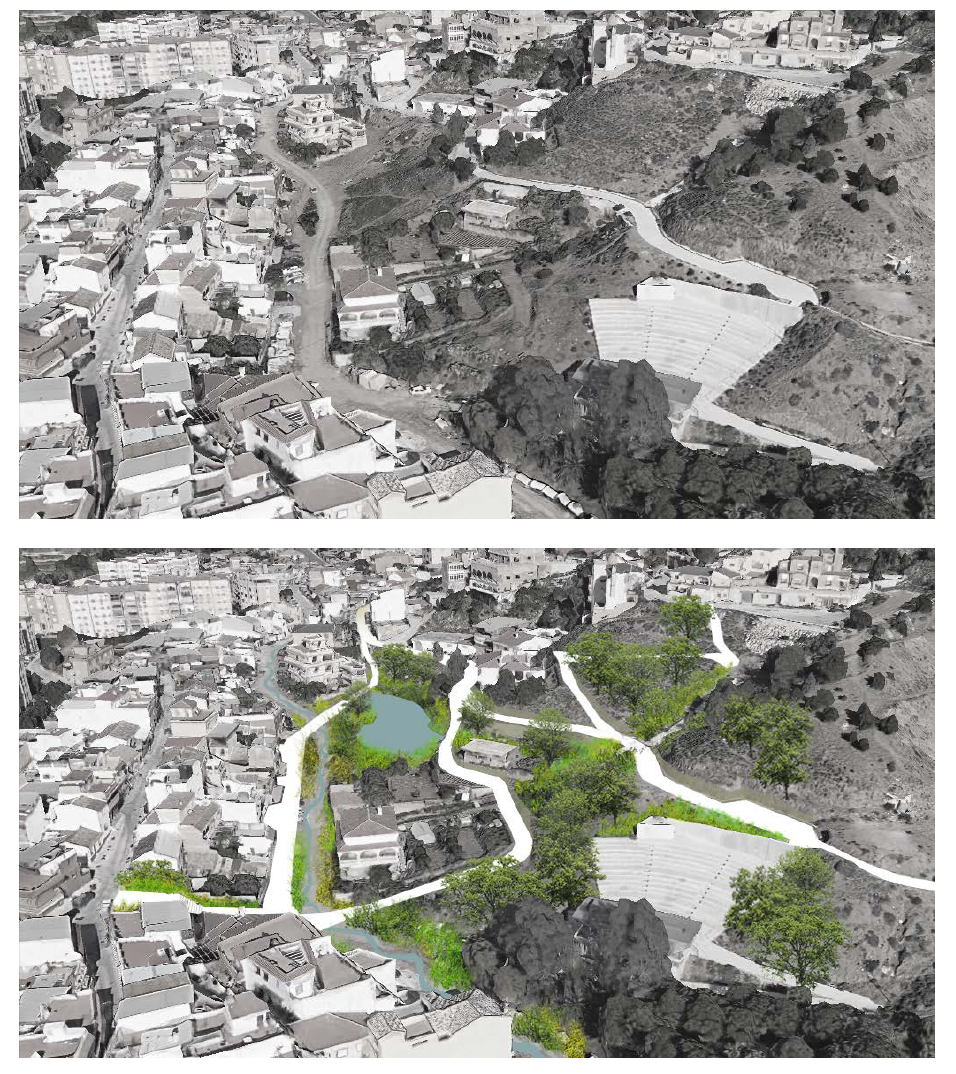Sustainable Self / Livable Net: Balancing sustainability and livability in dense urban environments through strategies for the mitigation of the UHI effect
Student: Francisco Marin Nieto
Mentors: Birgit Hausleitner, Alex Wandl
Program: MSc Urbanism
Graduation date: 29-06-2017
Abstract
Sustainability and livability are two important dimensions of urban environments, that are however found to be in a constant imbalance. The achievement of a sustainable and livable city is hindered by the constraints of urban form, and density, in particular, has a crucial role in defining the performance of urban environments in terms of livability and sustainability. Research shows that higher levels of density tend to result in more sustainable and less livable environments, and vice versa. In contemporary research, the understanding of the reasons behind this issue represents an urgency. There is, however, an apparent gap in knowledge in the field.The manifestation of this imbalance can take multiple forms. Being it an eminently abstract issue, its reduction to a manageable and well-studied problem facilitates research and the exploration of possible solutions. In this respect, the Urban Heat Island effect is a phenomenon that represents the essence of the issue and that is closely linked to spatial factors. The manifestation of the UHI effect in Málaga (Spain) constitutes a concrete problem, especially in the context of temperature rises and an aging population. The heterogeneity of Málaga’s fabric, where different levels of density are present, can both explain the uneven manifestation of temperature in the city and define limitations and potentials regarding the exploration of solutions. From an analytical point of view, this work seeks to define a criteria for the characterization of different density environments and a way to understand how temperature relates to its form through different scales. From a design-oriented perspective, the goal is to define a systemic approach to the issue and explore the ways in which urban form shapes the spatial manifestation of the solutions. Ultimately, the introduction of physical measures would not only help to mitigate the UHI effect, but constitute a step towards the necessary balance between sustainability and livability.





